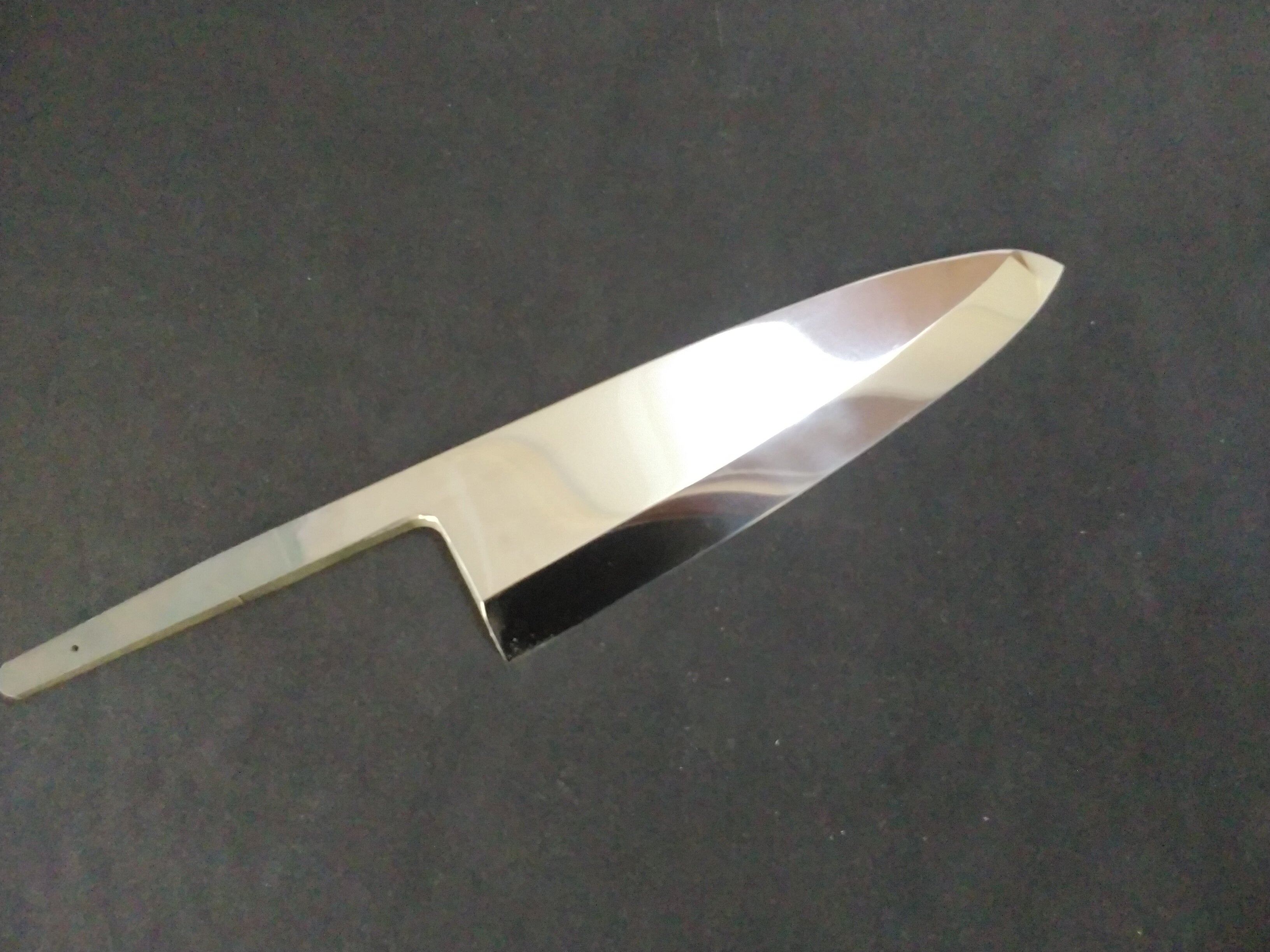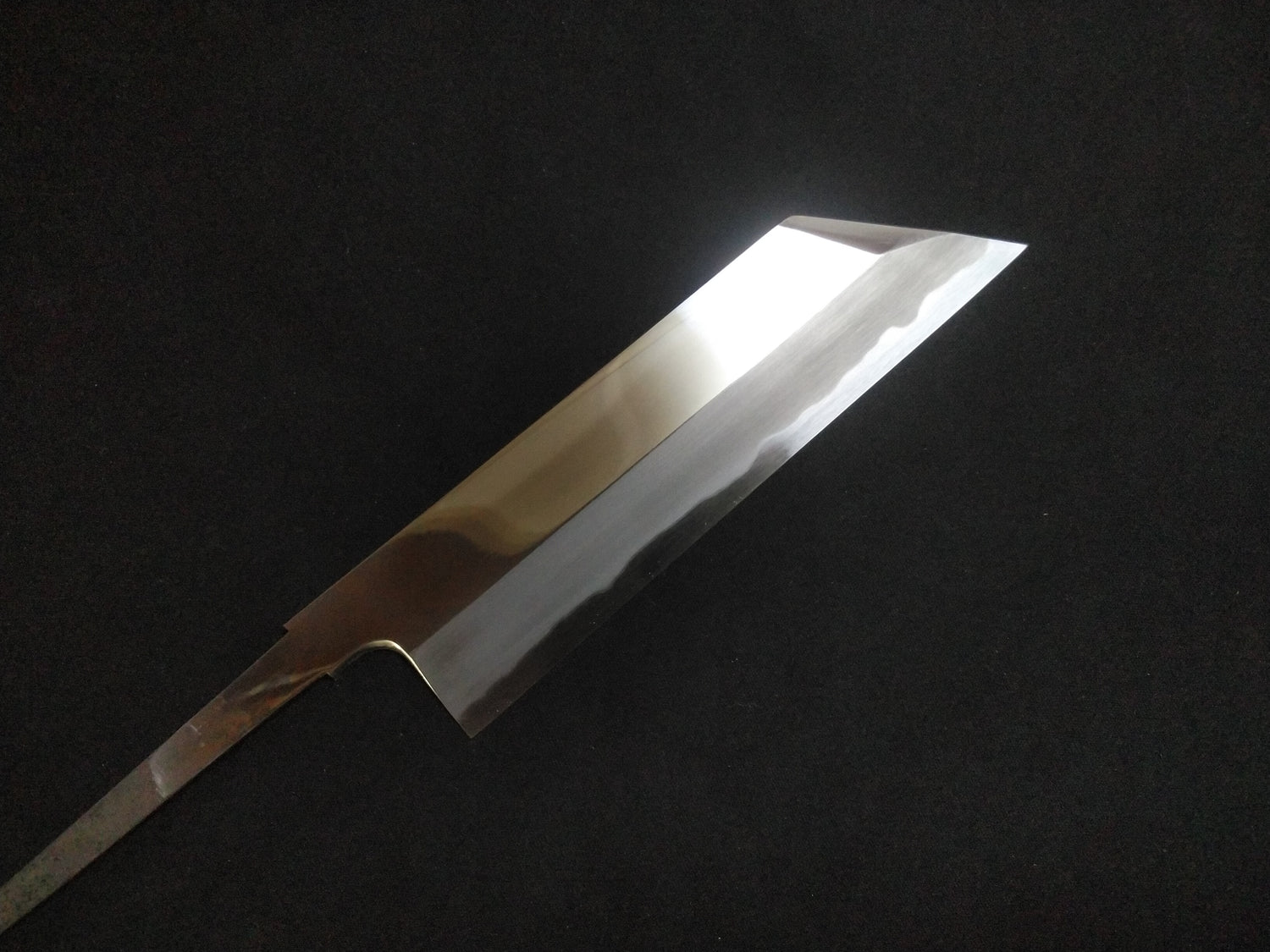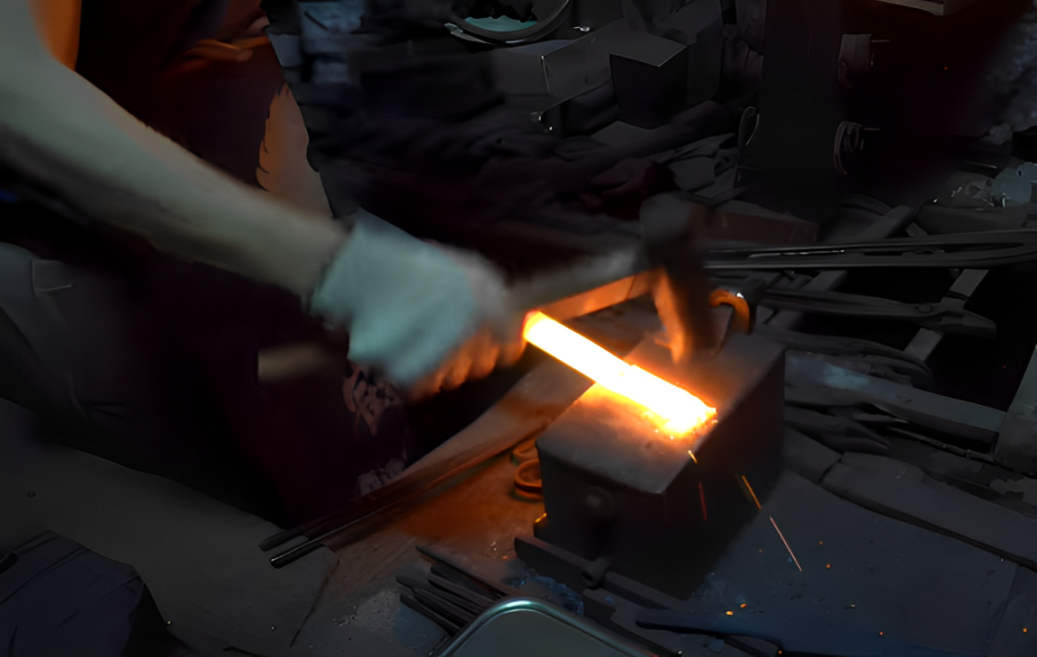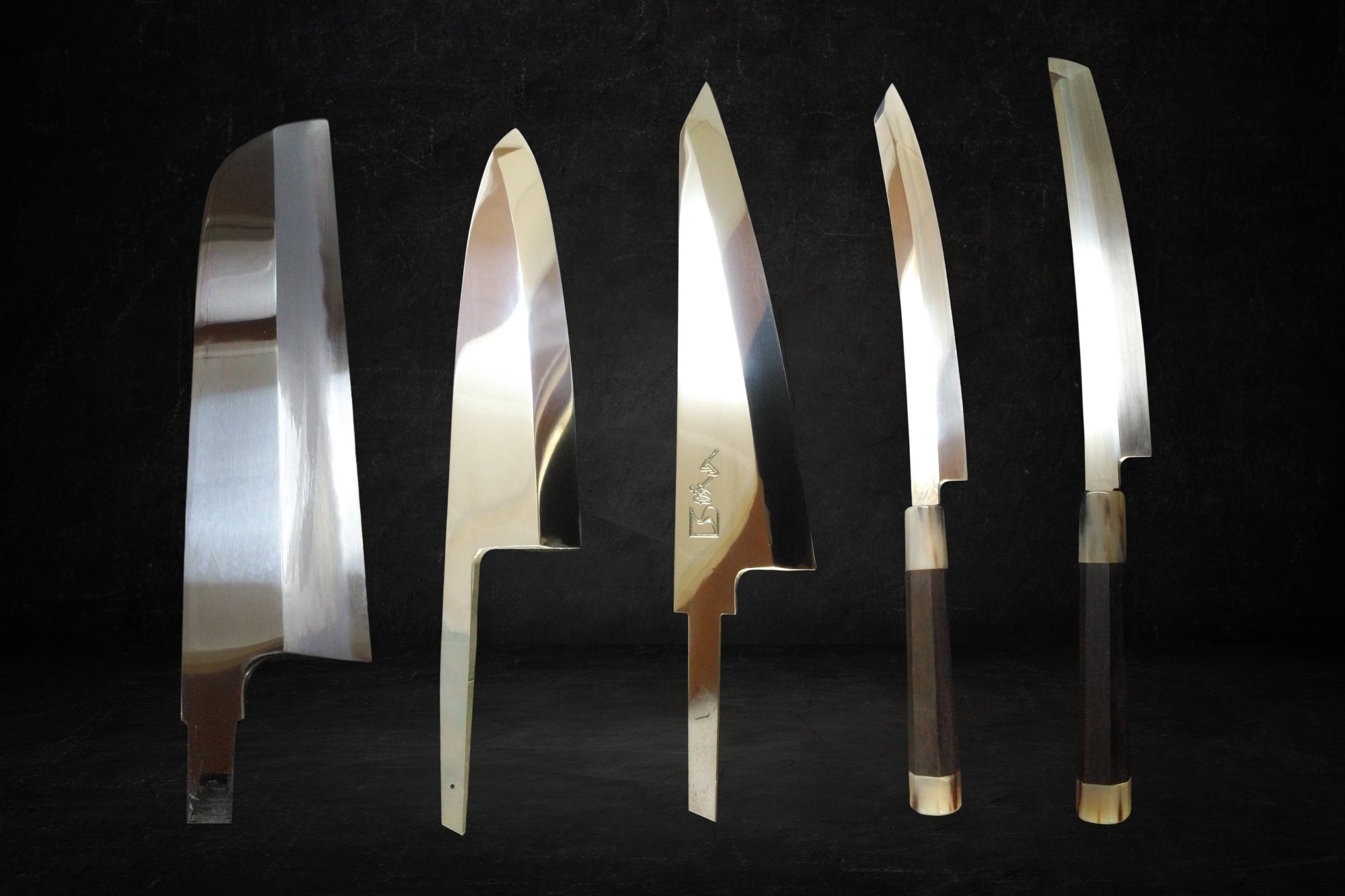
-
Types and Characteristics of Knives for Cutting Vegetables
-
JULY 31, 2023
-
Explore the specialized world of vegetable knives, each designed with unique characteristics to enhance the precision and ease of your vegetable preparation.
-
Introduction to Usuba
-
Usuba knives are a cornerstone in the world of professional chefs, especially when it comes to vegetable preparation. Known for their precision in peeling, chopping, carving, and slicing, Usuba knives are often the first choice for culinary experts. Mastering the use of an Usuba can significantly enhance your skills with other knives as well.
-

-
Key Features of Usuba Knives
-
- Thin Blade:
The hallmark of Usuba knives is their exceptionally thin blade, facilitating fine chops and peels without damaging the vegetable fibers. - Straight Edge:
The blade extends straight from heel to tip, ensuring consistent contact with the cutting board for rhythmic chopping. - Wide Blade:
The broad width of the blade supports extensive peeling tasks and intricate carvings, such as radish sculptures.
- Thin Blade:
-
Usuba Varieties
-
Usuba knives come in several shapes, catering to regional preferences and specific culinary tasks:
- Higashi-gata (Square-tip):
Predominant in Eastern Japan, featuring a slightly rounded tip for versatile cutting. - Kama-gata (Sickle-tip):
Favored in Western Japan, with a pointed tip ideal for detailed work. - Other variants like Kaku-gata (Square shape) and Hishi-gata (Diamond shape) are designed for specialized cutting techniques.
- Higashi-gata (Square-tip):
-
Choosing the Right Usuba
-
- Blade Length:
Common lengths range from 150mm to 300mm, with 180mm and 210mm being the most manageable sizes for general use. - Balance and Weight:
Depending on the blade's thickness, the weight and balance can vary, affecting the knife's handling.
- Blade Length:
-
Comparing Vegetable Knives
-
Besides Usuba, there are other knives designed for vegetable preparation:

Kamausuba
Sickle-shaped for specific cutting techniques, featuring a thin, narrow blade perfect for peeling.

Mukimono
Specialized for peeling and intricate vegetable cuts, with a narrow blade ideal for julienning.
-
Choosing Your Ideal Vegetable Knife
-
When selecting a vegetable knife, consider the following:
- Shape and Use:
The knife's shape should align with your cooking style and the tasks you frequently perform. - Blade Width and Thickness:
A moderate width and thin blade facilitate easier vegetable cutting.
- Shape and Use:
-
Conclusion: Enhancing Your Culinary Experience
-
Selecting the perfect Usuba knife, or any vegetable knife, depends on your personal cooking preferences and the specific tasks at hand. By finding the right knife, you can significantly improve the efficiency and enjoyment of your culinary creations.

Usuba
The KIREAJI Usuba collection page highlights the importance of the Usuba knife for vegetable preparation, emphasizing its thin blade, straight edge, and wide design for delicate tasks. The Usuba is essential for chefs and is their first choice for learning knife skills.

The Origin of Craftsmanship
-
The Heart of Sharing, the Legacy of Craftsmanship
Making a knife is not just about shaping steel. It's about connecting people through the craft. If we fight over what we have, it’s never enough, but when we share, there’s always more than enough. The same truth applies to the tradition of Japanese knives.
-
As craftsmen, we "share" the knowledge and skills passed down by our ancestors. Thanks to this, a single knife can travel into the hands of a chef, and with it, a new life is breathed into a dish that warms someone’s heart. This creates a beautiful cycle.
-
The story woven into each knife is about this act of sharing. What we create is not just a tool, but a bridge that enriches people’s lives. The true value of a Japanese knife lies in the spirit of sharing for others. That’s the essence of our craftsmanship.

Would you like to experience the sharpness of handcrafted knives from Sakai City, used by 98% of Japanese chefs?
Through our exclusive partnership with Shiroyama Knife Workshop, we bring you top-quality knives. In addition, we offer free Honbazuke sharpening, a protective Saya, and paid after-sales services to ensure long-term confidence.
KIREAJI's Three Promises to You
-

1. Exceptional Japanese Knives
Our knives, crafted by Sakai City's master artisans, combine traditional techniques with carefully selected materials, delivering unrivaled sharpness and durability.
-

2. For a Lifetime of Use
At KIREAJI, we see knives as lifelong companions. Each knife comes with a free saya, and we offer Honbazuke hand-sharpening by Shiroyama Knife Workshop in Sakai City.
-

3. Supporting the Joy of Continued Use
KIREAJI knives are made to grow with you. That’s why we provide trusted after-sales care (fee-based) .





